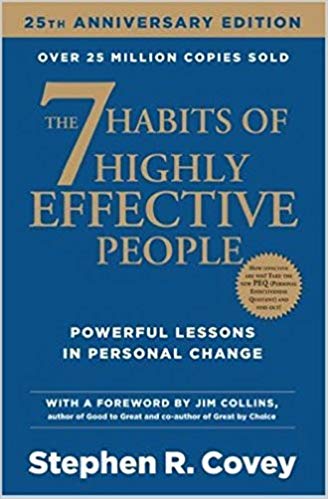

This article is an excerpt from the Shortform summary of "The 7 Habits of Highly Effective People" by Stephen Covey. Shortform has the world's best summaries of books you should be reading.
Like this article? Sign up for a free trial here .
Take a moment to think about your life and your goals. What are some things that you could do — but aren’t doing — that would significantly benefit your life and get your closer to achieving your goals? This is an important task, and one that you’re neglecting.
This is where Stephen Covey’s time management matrix and the four quadrants come in. Quadrants organize tasks according to urgency and importance. Covey’s matrix allows you to prioritize what matters.
What is Stephen Covey’s Time Management Matrix?
All tasks can be categorized based on their urgency and importance: An activity can be one (either urgent or important), both, or neither. Urgent matters are time sensitive, and they tend to grab your attention; this can be something as simple as a ringing phone. Important matters contribute toward your goals, values, and personal mission statement. Stephen Covey’s time management matrix helps us understand how we manage our time. We react to urgent matters, while important tasks that are not urgent require us to be proactive.
Covey’s time management matrix can be thought of like a grid. Picture a square divided into four quadrants: One axis measures whether or not something is urgent, and the other measures whether or not it’s important. You can see Stephen Covey’s time management grid below.
| Urgent | Not Urgent | |
| Important | Quadrant I Urgent and Important | Quadrant II Not Urgent, but Important |
| Not Important | Quadrant III Urgent but Not Important | Quadrant IV Neither Urgent nor Important |
Quadrant I is urgent and important. Crises and problems live here, and life inevitably throws some Quadrant I tasks at all of us. We see in Covey’s time management matrix that these are things that are urgent and important. However, some people seem to spend all their time in Quadrant I, constantly putting out fires and feeling like they never have time or energy to tackle anything that’s not urgent; in need of respite, they occasionally escape to the more leisurely Quadrant IV, where things are neither urgent nor important. The catch is that the more time you spend in Quadrant I, the more you will be stuck there, because you don’t have time to do the maintenance and preventive measures that help avoid crises. The Covey matrix serves as an excellent reference point for managing time.
Quadrant III is urgent, but not important. These kinds of activities can eat up your precious time and energy, without giving much value back to your life. According to Stephen Covey’s time management matrix, some people don’t even realize that these matters are not important, assuming that urgency implies importance; but the urgency is often dictated by other people’s priorities and expectations — what other people tell you must get done — rather than your own goals and values.
Quadrant IV is neither urgent nor important. These are things you may do purely for enjoyment, or out of confusion about what’s truly important. Quadrants III and IV are irresponsible uses of your time, because they contribute nothing toward your life. Covey’s time management matrix makes it clear that effective people avoid these activities.
Quadrant II is not urgent, but important. This is where effective people focus their time and energy, and is the main point of the Covey matrix. The discipline to prioritize these tasks is key to self-management and achieving your personal mission. Quadrant II includes activities that could easily be put off for their lack of apparent urgency, but which will greatly benefit your life in the long term if you invest the time in them; Covey’s time management matrix indicates that these activities include developing relationships, defining your personal mission statement, exercising, and performing preventive maintenance (e.g. oil changes for your car, health check-ups, flossing, or home maintenance).
Stephen Covey’s time management grid helps us see clearly how to separate and manage our time according to our priorities.
Covey’s time management matrix makes it clear that effective people are proactive and understand the value of investing their time and energy into Quadrant II activities. Effective people respond to opportunities to do what’s important, instead of reacting to urgent problems. When things come up, it’s easier to determine what’s important and what isn’t once you’ve defined your goals and personal mission statement.
Though in life, we must at some point pat attention to tasks that fall within all the quadrants, ideally we want to achieve self-awareness and use Covey’s time management matrix so it can enable us to spend most of our time on quadrant II tasks- the ones that are the most rewarding and will propel us toward our goals.
Remember, you can always reference Stephen Covey’s time management grid to reframe how you view the daily tasks of your life.
———End of Preview———

Like what you just read? Read the rest of the world's best summary of "The 7 Habits of Highly Effective People" at Shortform . Learn the book's critical concepts in 20 minutes or less .
Here's what you'll find in our full The 7 Habits of Highly Effective People summary :
- How to prioritize the hundred tasks you have to focus on the one or two that really matter
- The right way to resolve every disagreement and argument
- How to avoid burning out and succeed over 20+ years






